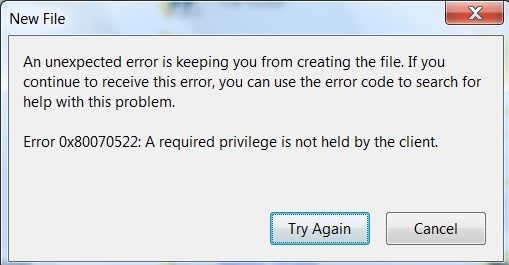Error Invalid Data Segment Uncompressed


Continuously varied JPEG compression (between Q=100 and Q=1) for an JPEG ( ) is a commonly used method of for, particularly for those images produced. The degree of compression can be adjusted, allowing a selectable tradeoff between storage size and. JPEG typically achieves 10:1 compression with little perceptible loss in image quality.
May 13, 2015. EnCase allows to store the data compressed either using a fast or best level of the deflate compression method. EnCase 7 no longer distinguishes between fast or best compression and just provides for either uncompressed or compressed. Besides digital evidence the evidence files, or segment files,. Sep 19, 2017. There are many possible causes for data damage. Among the most common is a transfer error when downloading a Zip file from the internet. Such an error can introduce invalid data into a Zip file. Some other possible causes include exposure of media to excessive temperatures or magnetic fields and. 21.22 null; 21.23 nut; 21.24 ogg; 21.25 segment, stream_segment, ssegment. 24.1 async; 24.2 bluray; 24.3 cache; 24.4 concat; 24.5 crypto; 24.6 data; 24.7 file; 24.8 ftp; 24.9 gopher; 24.10 hls; 24.11 http. 24.11.1 HTTP. Applying filters is obviously also impossible, since filters work on uncompressed data.
JPEG compression is used in a number of. JPEG/ is the most common image format used by and other photographic; along with JPEG/, it is the most common format for storing and transmitting on the. These format variations are often not distinguished, and are simply called JPEG.
The term 'JPEG' is an initialism/acronym for the, which created the standard. The for JPEG is image/jpeg, except in older versions, which provides a MIME type of image/pjpeg when uploading JPEG images. JPEG files usually have a of.jpg or. Motorola Astro 25 Portable Cps Software Download here. jpeg. JPEG/JFIF supports a maximum image size of 65,535×65,535 pixels, hence up to 4 gigapixels for an of 1:1. Contents • • • • • • • • • • • • • • • • • • • • • • • • • • • • • • • The JPEG standard [ ] 'JPEG' stands for, the name of the committee that created the JPEG standard and also other still picture coding standards.
The 'Joint' stood for ISO TC97 WG8 and CCITT SGVIII. In 1987 ISO TC 97 became ISO/IEC JTC1 and in 1992 CCITT became ITU-T. Currently on the JTC1 side JPEG is one of two sub-groups of /, Subcommittee 29, Working Group 1 (/WG 1) – titled as Coding of still pictures. On the ITU-T side ITU-T SG16 is the respective body. The original JPE Group was organized in 1986, issuing the first JPEG standard in 1992, which was approved in September 1992 as Recommendation T.81 and in 1994 as / 10918-1. Halo Combat Evolved Pc Dev Trainer Download. The JPEG standard specifies the, which defines how an image is compressed into a stream of and decompressed back into an image, but not the file format used to contain that stream.
The and standards define the commonly used file formats for interchange of JPEG-compressed images. JPEG standards are formally named as Information technology – Digital compression and coding of continuous-tone still images. Ancient Aliens History Channel Legendado Movie here.
ISO/IEC 10918 consists of the following parts: Digital compression and coding of continuous-tone still images – Parts Part ISO/IEC standard ITU-T Rec. See also: A number of alterations to a JPEG image can be performed losslessly (that is, without recompression and the associated quality loss) as long as the image size is a multiple of 1 MCU block (Minimum Coded Unit) (usually 16 pixels in both directions, for 4:2:0 ). Utilities that implement this include, with user interface Jpegcrop, and the JPG_TRANSFORM plugin to. Blocks can be rotated in 90-degree increments, flipped in the horizontal, vertical and diagonal axes and moved about in the image. Not all blocks from the original image need to be used in the modified one.
The top and left edge of a JPEG image must lie on an 8 × 8 pixel block boundary, but the bottom and right edge need not do so. This limits the possible lossless crop operations, and also prevents flips and rotations of an image whose bottom or right edge does not lie on a block boundary for all channels (because the edge would end up on top or left, where – as aforementioned – a block boundary is obligatory).
Rotations where the image is not a multiple of 8 or 16, which value depends upon the chroma subsampling, are not lossless. Rotating such an image causes the blocks to be recomputed which results in loss of quality. When using lossless cropping, if the bottom or right side of the crop region is not on a block boundary then the rest of the data from the partially used blocks will still be present in the cropped file and can be recovered. It is also possible to transform between baseline and progressive formats without any loss of quality, since the only difference is the order in which the coefficients are placed in the file.